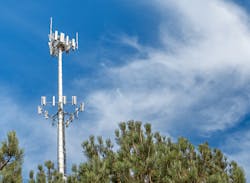By Patrick McLaughlin
An addendum to the ANSI/TIA-607-D standard, commonly referred to as the bonding and grounding standard, will harmonize the document with a separate Telecommunications Industry Association (TIA) standard addressing wireless antenna support systems. The TIA-607-D standard, developed by the TIA TR-42.3 Committee, is officially titled Generic Telecommunications Bonding and Grounding (Earthing) for Customer Premises. It has an informative Annex D that addresses towers and antennas.
A different standards-development committee within TIA, TR-14 Structured Standards for Communication and Small Wind Turbine Support Structures, developed and updates ANSI/TIA-222-H Structural Standard for Antenna Support Structures, Antennas and Small Wind Turbine Support Structures.
The collaboration between the two committees began in 2019. At TR-42.3’s meeting in September 2019, a representative of TR-14 provided an overview of the TIA-222-H standard. A task group formed at that September 2019 meeting, which members of both committees, collaborated through much of 2020 to harmonize the two standard documents by identifying changes needed to each standard and also identifying where each standard should reference each other.
At TR-42.3’s October 2020 meeting the committee reviewed the task group’s efforts, specifically including recommended changes to TIA-607-D’s Annex D. The committee approved a project authorization request (PAR) for Addendum 1 to ANSI/TIA-607-D.
The committee’s next meeting took place in February 2021, during which a draft of the addendum was introduced. At that meeting, TR-42.3 authorized an industry ballot; that ballot remains open until mid-April.
Of the several changes in the draft addendum, the recommendation to use tinned conductors in grounding systems is most prominent. The draft addendum recommends the use of tinned conductors. For example, current wording in TIA-607-D Annex D concerning bonding busbars includes the following: “The external bonding busbar is installed at the point where the antenna transmission lines and other telecommunications cables enter the building or shelter. It is connected directly to the grounding electrode system using 2 AWG or larger uninsulated, solid or stranded, tinned or untinned copper conductor.” In the draft addendum, the words “tin conductors are recommended” are added to the end of that statement. Elsewhere in the draft, the use of tinned conductors is recommended in sections addressing ground radial electrodes, tower grounding, wooden structures such as poles, building/shelter and outdoor cabinet grounding, generators, satellite dishes, and bonding to the external ground electrode system.
The section of the draft addendum that addresses self-supporting metallic towers also has undergone noteworthy revision from what was originally published in TIA-607-D Annex D. The revisions primarily deal with the width of a monopole tower’s base, and based on that width, the number of ground rods to which the tower should be connected.
We will continue to follow the progress of this addendum and report on its ultimate publication.
Patrick McLaughlin is our chief editor.
